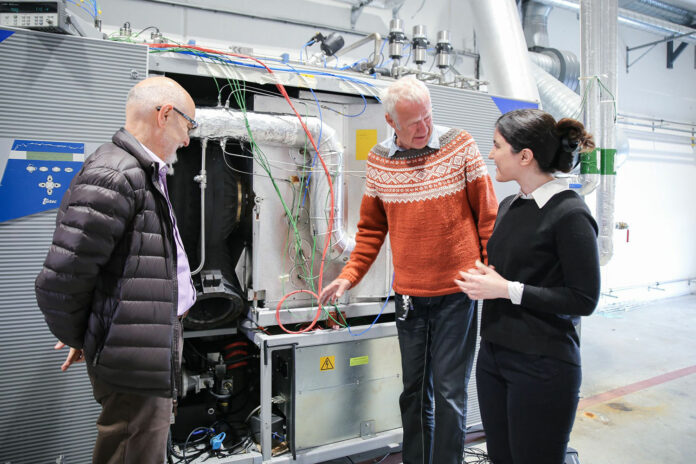Gas turbines, also called combustion turbines, are used to power aircraft, trains, ships, electrical generators, pumps, gas compressors, and tanks. While gas turbines are often advertised as fuel flexibility, about 90% of them worldwide operate on natural gas, a fossil fuel that produces carbon dioxide when you burn it.
Now, researchers at the University of Stavanger (UiS) have been working on developing a method for using pure hydrogen as fuel in gas turbines. The goal is to produce electricity with zero CO2 emissions. The researchers claim that they reached an important milestone in mid-May 2022; they started running the turbine in 100% hydrogen.
The university operates its own micro gas power plant in southwest Norway, and its gas turbine produces both heat and electricity. It also supplies hot water for heating the laboratory buildings in the immediate area.
“We have set a world record in hydrogen combustion in micro gas turbines. No one has been able to produce at this level before,” says Professor Mohsen Assadi, who led the research. “The efficiency of running the gas turbine with hydrogen will be somewhat less. The big gain, though, is to be able to utilize the infrastructure that already exists. In addition, there are no CO2 emissions associated with this energy production.”
The team’s research focuses on tuning the combustion chamber technology for hydrogen and adapting the fuel system and the existing natural gas infrastructure to handle hydrogen instead of natural gas.
The team will now take a closer look at the limitations of the gas plant and find out how they can increase the capacity to produce as much clean energy as possible. The micro gas turbine plant is a collaboration with the German research center DLR (German Aerospace Center). They have provided the combustion chamber, which has made it possible to carry out the tests.
